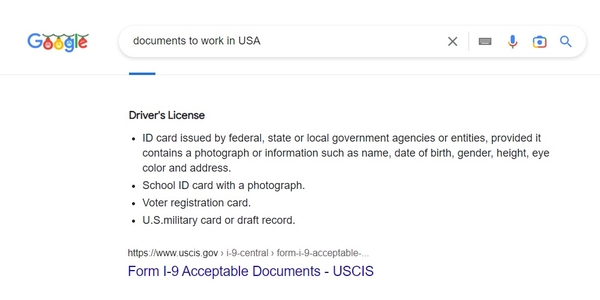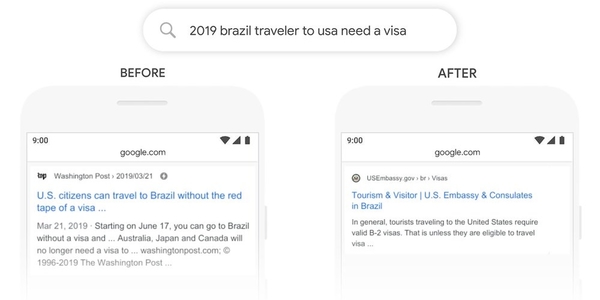
Hundreds of updates to Google’s algorithms are applied every year, all of them based on the Search Quality Ranking Guidelines and implemented to improve in one way or another the search results that users get when making a query.
However, among the large number of modifications that Google has made to its algorithms, a few stand out that are tremendously important, and in this article I want to talk about Google BERT , an update announced by Pandu Nayak (VP of Google Search) on the 25th of October 2019.
For now, in this article I will give you a little preview of some key aspects to understand what BERT is, how it works in Google Search algorithms and how it impacts SERPs and SEO strategies. Shall we start?
What is Google BERT and how does it work in Google’s algorithms?
BERT is the acronym for Bidirectional Encoder Representations from Transformers . Technically, BERT is an Artificial Neural Network (RNA) model applied to the field of Natural Language Processing (NLP), specifically to the subfield of Natural Language Understanding (NLU).
In other words, BERT is a system based on artificial intelligence (AI) to help Google algorithms in natural language processing, that is, to better understand the language that users use when performing a search using prayers,
In this sense, the new update in Google’s algorithms is as innovative as the one made in 2015 with RankBrain , the first AI mechanism used to analyze user search queries and better rank results in the SERPs. Both systems, BERT to a greater extent, apply an analysis method that allows each query to be contextualized in a more natural way.
To achieve this, BERT has a feature called “bidirectionality” , which consists of parsing a sentence in two directions. That is, it analyzes the words that are found both to the left and to the right of a keyword, and this allows it to deeply understand the context and theme of the entire phrase that a user enters for the Google search.

In this way, after understanding very well what a certain query is about, Google’s algorithms, thanks to its more than 200 classification factors , select those contents that best respond to that search, with which the results in the SERPs become increasingly relevant to users.
Therefore, although BERT is not really a classification factor , it is directly related to several of them, since this system will begin to be in charge of telling the algorithms exactly what users need to find .
How does BERT affect the Google Search SERPs?
According to the official Google Search team, the goal of the platform is to quickly give users the exact answers they need . To do this, content classification algorithms evolve every day. However, not only the ranking of the indexed pages is important, but also the linguistic understanding of the queries made. This last point is where BERT comes in .
Thanks to BERT’s analysis of queries, Google results pages are much better tailored to the interests of users. This means that “key words or keywords” are no longer as relevant as individual elements, since from now on Google gives higher priority to search intentions instead of words that, by themselves, are decontextualized and fail to convey a specific question.
This new Google Search process will gradually improve the generation of featured snippets and the zero-click phenomenon in the SERPs , since, on the one hand, featured snippets are capable of yielding a result that responds very directly to an intention search. This, in turn, produces what is known as “zero click”, which means that users, after performing a search, no longer need to click to enter a page that answers their query, Well, this answer can already be seen directly in the SERP.
An example of featured and zero click snippets is as follows:

Thus, for the query “Documents to work in the United States”, a prominent fragment appears in the SERP where a direct response is immediately displayed, and without the need for the user to click on any page.
While it is true that featured snippets work before BERT , it is also true that with this new update the generated snippets will start to be much more efficient, accurate, and applicable to a larger number of queries.
How to improve SEO before Google BERT?
Another of the innovations that characterizes BERT is a property called “ Transformers ” . This consists of a scoring mechanism that allows identifying which is the most correct meaning of a word within a particular sentence (in the case of words that have several meanings). These scores are assigned by analyzing, in a bidirectional way, the words located to the left and to the right of each of the terms.
In this sense, Pandu Nayak states the following about the algorithm :
“There is still a lot of work ahead. For example, the word ‘bass’ means many things (it can be an adjective or a musical instrument). There are many meanings for a single word. That is why it is vital that you understand the context in order to understand the precise meaning of the term.
Thanks to this process, BERT can establish a very powerful semantic relationship between all the elements of a sentence, thus detecting users’ search intention quite effectively.
As we can see, BERT doesn’t miss anything , not even prepositions . Before BERT, the prepositions in a query were ignored by the algorithms, returning results that did not adapt very well to the needs of the users.
Let’s see an example of this:

Before BERT , the preposition “to” in the sentence “2019 brazil traveler to usa need a visa” was not taken into account by the algorithm. Because of this, the first result in the SERP responded to a search intent about “US citizens being able to travel to Brazil without a visa”.
After BERT , the preposition “to” is taken into account by the algorithm, which gives it a lot of value as a determining element to understand the true search intention. As a result, the new result in the SERP does fit the query about “Brazilian travelers who want to travel to the US and want visa information”.
Taking this key information into account, and although BERT is not a classification factor, we can apply certain changes in the way content is written in order to position ourselves better in Google.
In our ebook BERT for professionals: why is SEO revolutionizing? We explain in more depth what you can do regarding SEO to get the most out of this Google update.
However, in general terms, the main recommendation is that you start creating much more conversational content , as if you were speaking to your readers face to face. Do not be obsessed with the strict keywords of the Keyword Planner. Sometimes we see articles that, by keeping a keyword intact, lack all the human naturalness that prepositions, connectors and other linguistic elements give.
With BERT, Google Search is increasingly valuing content that really cares about responding to user queries in a natural way. Thus, SEO may soon fade into the background as “search engine optimization” and we should start applying “optimization for humans” .
What will you find in our free downloadable guide to Google BERT?

If you are interested in delving into this subject, I recommend you download the free ebook on BERT , where we answer some questions such as:
- What is BERT and what does each of its acronyms mean on a practical level?
- How does the BERT model affect SEO and what can we do about it?
- Why is this update so important for search results?
- Is BERT an ally or an obstacle for marketers?
- What are some examples of Google results with the new update?
- How does natural language processing (NLP) work in BERT?
- What language models have existed before BERT?
- What is the relationship of Python, PyTorch and TensorFlow with Google BERT?
- Are ALBERT or ‘Lite BERT’ and RoBERTa successors to this update?
- How has the model’s pre-training been according to the BERT paper ?
- Does the new modification of the algorithm work in Spanish?
Whether you are a digital marketing professional or a blogger, developer or IT specialist, our ebook will answer many questions regarding marketing and advanced technical aspects.
If you dedicate yourself to SEO, it will be important for you to finish reading this article. If you work in programming, we also invite you to access BERT’s GitHub to learn about all its technical resources.
Now, tell us: what do you think about this new Google update? We would like to know if you already know how to use it your favor, leave us your opinion in the comments!
What is BERT deep learning?
- BERT comes from the acronym Bidirectional Encoder Representations from Transformers, it is a Google algorithm applied to the field of natural language processing that is based on artificial intelligence (machine learning) to better understand the language of users when performing searches. on Google.
What does the word BERT mean?
- The word BERT comes from the acronym for Bidirectional Encoder Representations from Transformers.
Why is BERT so important?
- Google BERT has been designed to make more ambiguous searches more easily interpretable thanks to the context of the text that surrounds the search. This makes user searches get more accurate results.